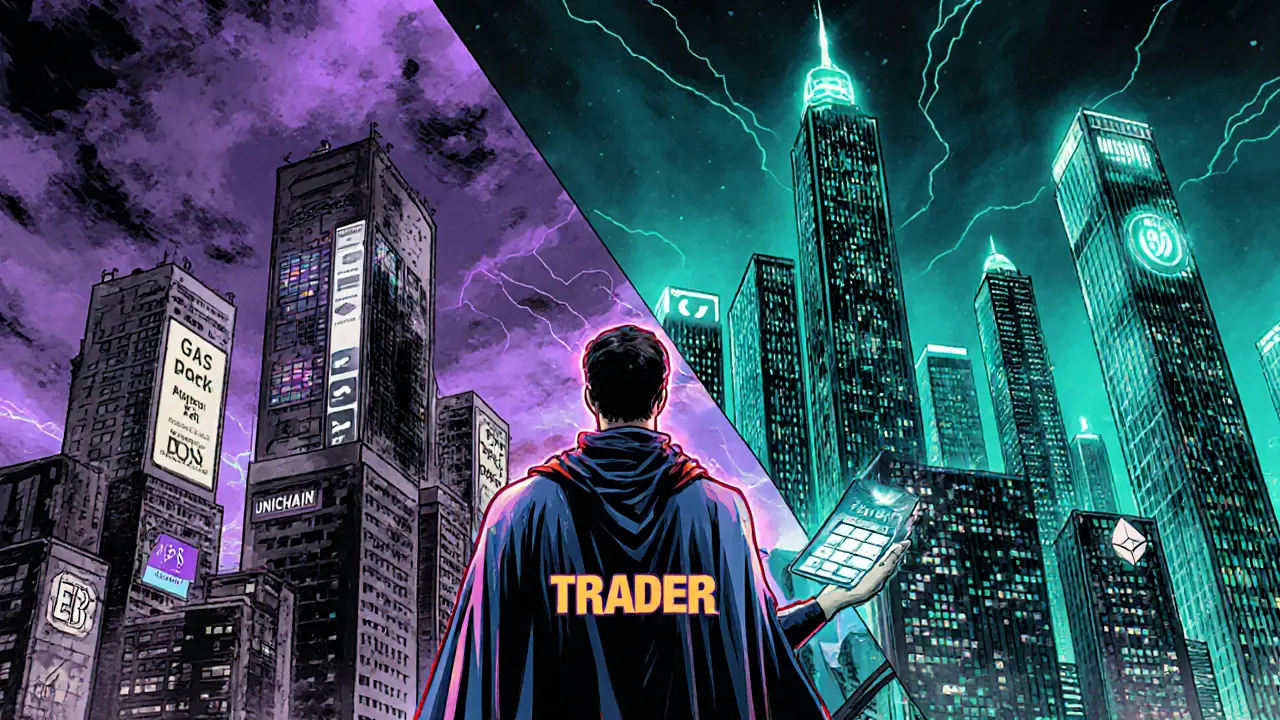Uniswap v2 Review – What Makes This Ethereum DEX Tick
When diving into Uniswap v2, the second‑generation decentralized exchange built on Ethereum that lets users swap ERC‑20 tokens without an order book. Also known as Uniswap V2, it introduced direct pair contracts, better price oracles, and a uniform 0.30% fee structure. Uniswap v2 is the backbone of many token‑trading strategies you’ll see across the crypto space.
How a Decentralized Exchange Shapes Token Access
At its core, decentralized exchange, a platform that operates on smart contracts instead of a central order book removes the need for a trusted intermediary. This design means anyone with an Ethereum wallet can trade instantly, bypassing KYC hurdles and reducing custody risk. Because the exchange is open‑source, developers can audit the code, and users retain full control of their assets. The rise of decentralized exchanges like Uniswap v2 has pushed liquidity deeper into the market, making niche tokens more reachable.
One of the biggest shifts a decentralized exchange brings is the way price discovery works. Instead of matching buyers and sellers, the platform relies on an automated market maker, a mathematical formula that sets token prices based on the relative sizes of two reserves. In Uniswap v2, the constant product formula x·y = k ensures that any trade moves the price along a smooth curve, reflecting real‑time supply and demand. This AMM model empowers traders to execute swaps at any time, even when the market is thin.
Because the AMM needs funds to work, Uniswap v2 introduced the concept of liquidity pool, a pair of ERC‑20 tokens locked in a smart contract that provides the depth for swaps. Liquidity providers (LPs) deposit equal values of both tokens, receive LP tokens representing their share, and earn a slice of the 0.30% fee on every trade. This simple incentive structure has turned ordinary token holders into passive income earners, while also ensuring that the market stays liquid. The pool’s size directly influences slippage: larger pools mean less price impact for big orders.
Uniswap v2’s reliance on ERC‑20 tokens is another key pillar. Every token that follows the ERC‑20 standard can be paired, swapped, or added to a pool without additional customization. This universal compatibility speeds up token listings and lowers barriers for new projects seeking exposure. Developers can launch a token, create a pair on Uniswap v2, and instantly tap into a global user base. The synergy between ERC‑20 flexibility and the AMM system fuels rapid innovation across DeFi.
Security considerations also matter. Because the platform lives on immutable smart contracts, any bug can have wide‑reaching effects. Uniswap v2 underwent multiple audits, and its open‑source nature invites community scrutiny. However, users still need to watch out for malicious token contracts that could drain approvals or embed hidden fees. Understanding the trust model of a decentralized exchange helps you navigate these risks.
From a trader’s perspective, Uniswap v2 offers several practical advantages. The uniform fee makes cost calculations straightforward, while the router contract simplifies multi‑hop swaps—so you can move from Token A to Token C through Token B in a single transaction. The built‑in price oracle aggregates time‑weighted average prices, giving DeFi apps a reliable source for collateral calculations. All these features combine to make Uniswap v2 a go‑to reference for both casual swaps and sophisticated arbitrage bots.
In the articles that follow, you’ll find detailed reviews of token projects that use Uniswap v2 for trading, deep dives into liquidity provision strategies, and step‑by‑step guides on navigating the platform safely. Whether you’re looking to earn fees as an LP, compare swap costs, or simply understand how an AMM powers the market, this collection gives you the hands‑on insight you need to act confidently.
A deep dive into Unichain, the Layer‑2 rollup powering Uniswap v2, covering speed, fees, user experience, fee distribution, ecosystem adoption, risks, and future roadmap.

